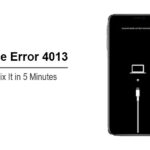Word cloud generators aren’t as popular nowadays, and they reached their peak popularity after. However, they continue to serve many different uses, and you can still find a variety of these tools on the internet. One of them is that they help you visualize the text.
This article will explore the capabilities of the best word cloud generator so that you can determine which one will most effectively help you build word clouds that you require. To evaluate the effectiveness of these programs, we made word clouds using popular poems and speeches. We also considered other features such as input options, output formats, or sharing capabilities.
Top 8 Word Cloud Generators
1. Wordart
Wordart is an online word cloud creator that promises to create stunning designs without requiring any graphic design. It comes with an interface that offers customizable formatting options and design choices, and a workspace for creating your own word clouds. In addition to copying or pasting texts, it is also possible to input the text in CSV format or pull it from URLs. You can change the size of the word you want to make larger or smaller.
There is also a broad assortment of fonts and shapes to pick from. There are filters available to make finding your favorite font or shape much easier. The word art generator lets users add their own designs and fonts. You can even include icons and emojis in the word clouds. Once you’re done, you’ll be able to upload your image to Facebook, Twitter, or email. It is also possible to embed it in a web page. Word clouds are available for download in PNG, JPEG, SVG, HTML, PDF, and CSV files.
Pros:
- Fully customizable shapes, fonts, colours, and layouts
- Export in multiple formats: PNG, JPEG, SVG, PDF, HTML, CSV
- Beginner-friendly; supports emojis and icons
Cons:
- Free version is limited
- High-resolution downloads may require payment
- Slight learning curve for advanced features
Also read: 10 Best AI Study Guide Makers to Boost Your Learning
2. WordClouds
WordClouds is a free word cloud generator that offers a range of custom options that can create a distinctive word cloud. It can extract words from PDF files apart from Text files, CSV documents, URLs, and even from the copied and pasted box. You can decide how words appear by adjusting the size of the gap between them and the direction in which they appear.
In addition, you can change font sizes to be larger or smaller by using a simple slider that makes changes in real-time. It is also possible to include links in the words. Word clouds can be shaped into fun shapes, letters, or an image uploaded. Color pickers allow you to apply a solid or a gradient photo to the background.
Pros:
- Completely free, no registration required
- Supports custom shapes, fonts, backgrounds, and hyperlinks
- Privacy-friendly; processing is client-side
Cons:
- User interface can feel slightly clunky
- Large image export may have size limits
- Full customization may require extra effort
3. WordIt Out
WordItOut is a unique tool to make word cloud art. It is not only for academic use. However, it can also be used for private use. The word cloud generator comes with a simple interface that users will quickly understand. In the beginning, you can create a word cloud by copying and pasting text or using the spreadsheet. You can also make an unfiltered word cloud that does not have words being filtered. Similar to most Word collage maker software, you can put the words in any style or color you prefer.
WordIt Out offers options for colors, color mixing methods, and color limit, which other free programs don’t have. You can also select the layout option, but you are limited to choosing aspect ratio, orientation, and center word position. Then, you can store your cloud of words by giving it public or private access. However, you must provide your email address to receive the design. If you’d like to keep the design as a keepsake, you can use Zazzle to have it professionally printed onto a T-shirt, mug, or any other surface.
Pros:
- Fast and easy to use
- Supports color blending and word limits
- Clean, distraction-free interface
Cons:
- Limited layout and shape options
- Fewer export and analytics features
- Basic interface may feel restrictive
4. ABCya!
ABCya! is a word cloud generator for children from pre-Kindergarten to sixth grade. It has a simple and fun interface that makes creating word clouds seem like playing. All you have to do is insert your text inside the word box, then select Create to create your personal word cloud. Once you’ve entered your content, you can use different buttons to add the effects you want to your cloud. You can set a word limit of between 10 and 1,000 words to be included in your cloud. The versatility of this generator makes it ideal for creating Word clouds to be used for academic purposes, such as when brainstorming ideas for different kinds of abstract research papers.
In addition, the randomize button can alter your cloud to different fonts, font colors, and even shapes. In contrast, it lets you select from a variety of shapes. You can choose the fonts and colors according to your needs. However, you have a limit of 12 options you can choose from using the free online tool. The word cloud that you create can be downloaded as a PNG file and printed out as a PDF document. For free, you can save at least three words. With a Premium account, you can create unlimited favorites and view your word cloud in full screen, and much more. A Premium Family plan starts at $5.83 per month and is billed annually. The Premium Classroom plan costs just $25 per month.
Pros:
- Simple and engaging interface for students
- Fun shapes and fonts for creative clouds
Cons:
- Limited features for professional use
- The free version may include ads
- Not suitable for business or detailed text analysis
5. TagCrowd
TagCrowd is another simple web-based word cloud generator that enables you to create Word clouds for educational or business purposes. Students, for example, can easily generate tag clouds using any textual information wth a simple copy-and-paste method (McKee-Waddell 2015).
It also provides a variety of alternatives to ensure that the word cloud appears exactly as you would like. For example, you could specify a specific range for the number of words to be displayed or set the minimum frequency for the least frequently used words. It is also possible to group similar English words and block certain terms from the word cloud. This word cloud generator can help students who want to learn about different types of writing.
Pros:
- Clean and simple for research or academic work
- Supports text, URL, or file upload
- Free and allows commercial use under Creative Commons
Cons:
- Limited design, fonts, and shapes
- Dated interface
- Not visually rich
6. Monkeylearn WordCloud Generator
Microsoft WordCloud Generator is an easy-to-use word cloud generator with a clean and simple user interface. Similar to many word cloud generators, it lets you paste text into the text box or upload an image file. But what distinguishes it is that it creates an index of the most relevant or commonly used words. You can determine how many times a particular word has been mentioned in the cloud, along with its relevance scores beside it.
MonkeyLearn provides a wide range of customizable tools. Dropper tools enable you to modify the font and background to whatever hue you like. There are dropdown options for fonts and themes, although the choices are quite limited. In contrast, using sliders to alter the word count makes it simple to make changes in real-time on your cloud. After you’ve finished, you can save your Word Cloud in an SVG or PNG as well as a CSV or PNG file.
Pros:
- Shows word frequency and relevance
- Custom fonts and colors available
- Download both image and data (CSV)
Cons:
- Cannot create custom shapes
- Input limited to ~200,000 characters
- More analysis-focused than visual design
Also read: How to Use Brainrot Translator + Top 5 Alternatives
7. Jason Davies Word Cloud
Jason Davies Word Cloud is a JavaScript-based word cloud generator that allows you to visualize text information with a simple interface. In contrast to other word cloud applications that focus more on design, this one concentrates on the math behind word arrangement. For instance, you can pick from Archimedean and rectangular designs. The scale options include sqrt n or n. You can alter the orientation of the layout by changing the degree and number of degrees in text boxes. Another option that is not mathematical is the text-based field for inserting the font of your preference.
But it is restricted to fonts that are commonly used, such as Arial, Times New Roman, or similar. You can also alter the quantity of words that appear within your word cloud by using a text box. In contrast, the checkbox allows you to display sentences or phrases in a single line. Jason Davis’ Word Cloud tool is the only method of creating a word cloud. You can only copy and paste text into the text box, which is not possible with other word cloud programs, which can import text from Word, PDF, CSV, and Word documents. Also, there are no options to alter the shape or color of the text.
Pros:
- Algorithm-focused, lightweight, and free
- Good for experimenting with layouts and scaling
Cons:
- Minimal design, few fonts/shapes
- Mostly a demo or academic tool
- Some layouts require technical understanding
8. AhaSlides
AhaSlides Live Word Cloud Generator redefines the way audiences engage by focusing on real-time interaction with dynamic visualisation of content over aesthetics. With AhaSlide, attendees can instantly add responses from their devices and create visually stunning word clouds during live sessions. This easy-to-use method can be further simplified through easy access via unique QR codes, increasing participation in presentations, workshops, classrooms, and virtual gatherings. This also enables accessibility without the need for complicated setups or software for seamless collaboration and communication.
Pros:
- Real-time submissions from participants
- Popular words appear larger for clear visuals
- Customisable colours, themes, and backgrounds
- Anonymous contributions for honest responses
Cons:
- Requires an internet connection
- Occasional technical glitches
- Limited design flexibility (no custom shapes)
Ending Point
As you can find, there’s a wide selection of word cloud generators online that you can test today. Each word cloud generator employs an individual method of operation. Whatever your search phrase might be, there’s bound to be a word cloud that will meet it!
When you’re trying to visualize text in your head, there are a variety of methods you can use. The only thing you have to do is know which direction the text should be directed in.
FAQs: Word Cloud Generator
What is a Word Cloud Generator?
A Word Cloud Generator is an online tool that turns text or data into a visual cloud of words, highlighting the most frequent terms with bigger fonts or different colors.
How do I use a Word Cloud Generator?
Simply paste your text, upload a file, or enter a URL into the tool. Customize shapes, colors, and fonts, then generate the cloud. Some tools also allow exporting as PNG, SVG, or PDF.
Which Word Cloud Generator is best for beginners?
Tools like WordArt.com, WordClouds.com, and ABCya! are user-friendly and ideal for beginners.
Can I customize the shape of a Word Cloud?
Yes. WordArt.com allows custom shapes, emojis, and icons. Others like TagCrowd or MonkeyLearn focus more on analytics and frequency, so they have limited design options.
Are Word Cloud Generators safe to use?
Most reputable generators process your data client-side or temporarily, but always check privacy policies, especially when uploading sensitive content.















Leave a comment